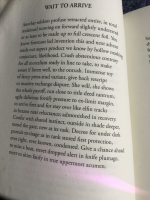Benny Bunter
Well-known member
Yeah I suppose. There has to be something in the poem that attracts you to it in the first place though. Some of the later stuff is really off-putting, but I liked this one for some reason.
Been looking at kazoo dreamboats a little bit today which previously seemed completely impenetrable. I'm thinking the best way to approach it is just dip in at random sections that catch your eye and read a paragraph. Hadn't realised but there are some quite lucid sections in there.
Been looking at kazoo dreamboats a little bit today which previously seemed completely impenetrable. I'm thinking the best way to approach it is just dip in at random sections that catch your eye and read a paragraph. Hadn't realised but there are some quite lucid sections in there.


